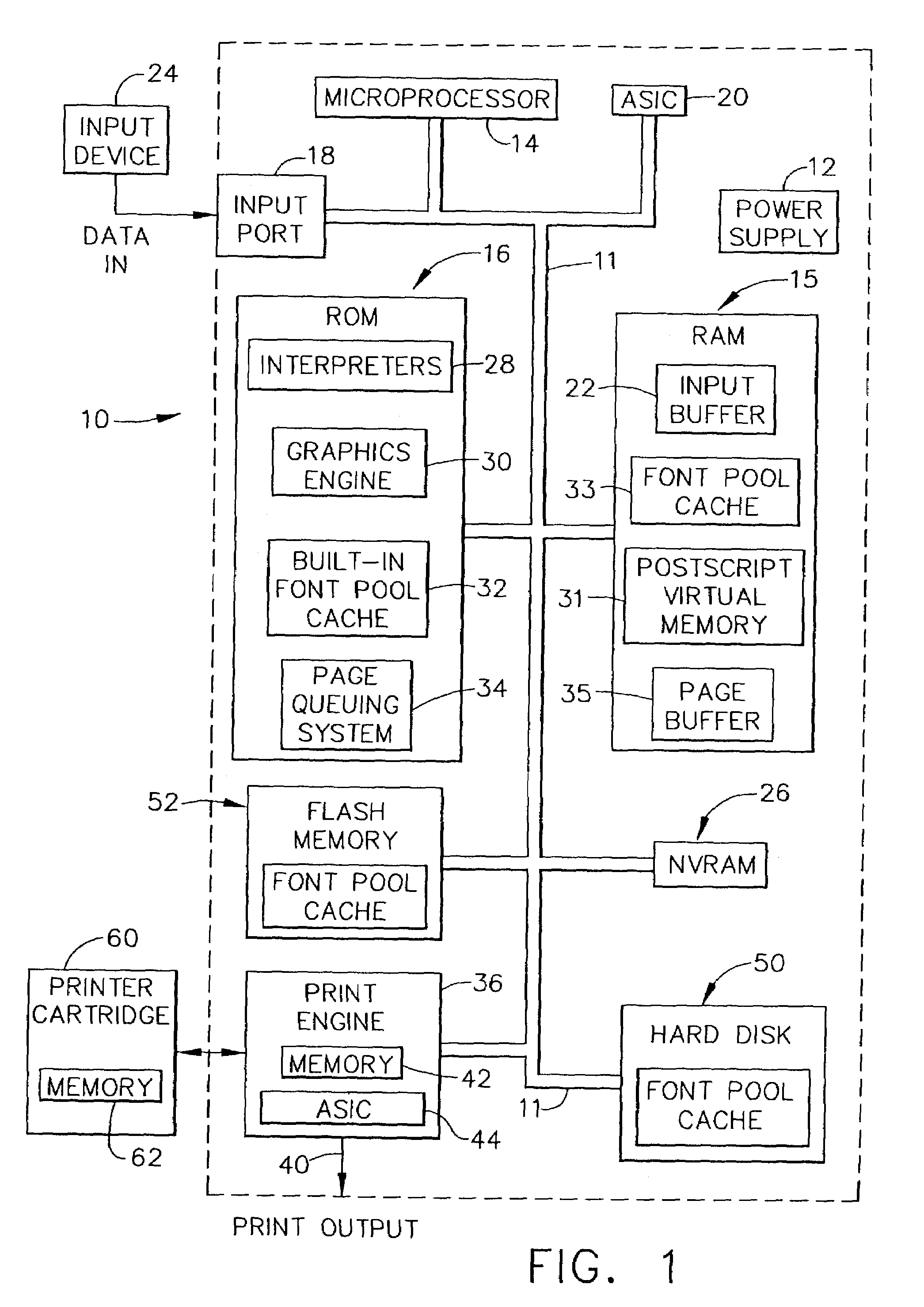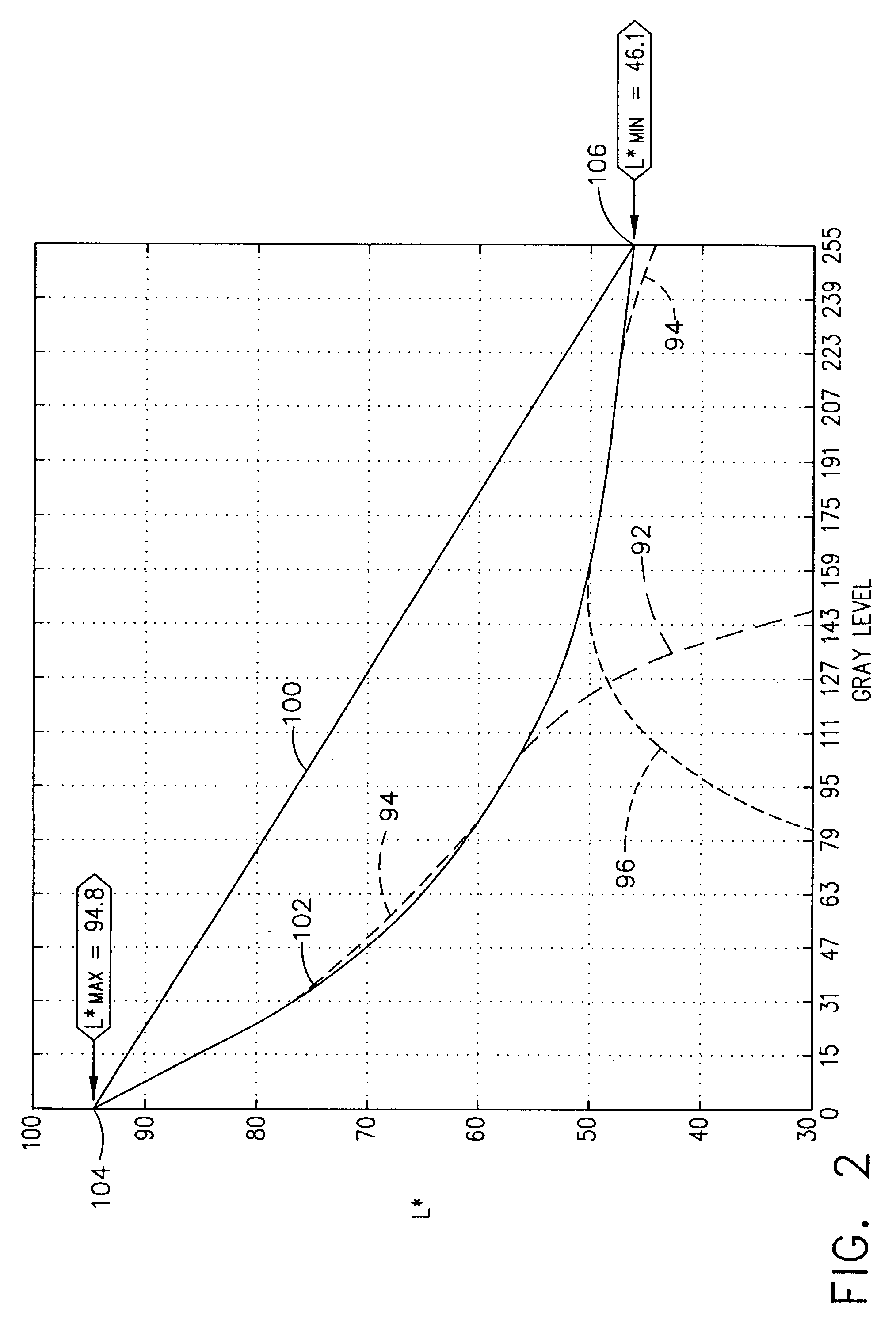Method for correcting unadjusted threshold arrays for halftoning by use of parameterized transfer functions that generate adjusted threshold arrays at run time
- Summary
- Abstract
- Description
- Claims
- Application Information
AI Technical Summary
Benefits of technology
Problems solved by technology
Method used
Image
Examples
Embodiment Construction
[0047]Reference will now be made in detail to the present preferred embodiment of the invention, an example of which is illustrated in the accompanying drawings, wherein like numerals indicate the same elements throughout the views.
[0048]Referring now to the drawings, FIG. 1 shows a hardware block diagram of a laser printer generally designated by the reference numeral 10, although virtually the same components will be found on many ink jet printers. Laser printer 10 will preferably contain certain relatively standard components, such as a DC power supply 12 which may have multiple outputs of different voltage levels, a microprocessor 14 having address lines, data lines, and control and / or interrupt lines, Read Only Memory (ROM) 16, and Random Access Memory (RAM) 15, which is divided by software operations into several portions for performing several different functions.
[0049]Laser printer 10 also contains at least one input port, or in many cases several types of input ports, as de...
PUM
 Login to View More
Login to View More Abstract
Description
Claims
Application Information
 Login to View More
Login to View More - R&D
- Intellectual Property
- Life Sciences
- Materials
- Tech Scout
- Unparalleled Data Quality
- Higher Quality Content
- 60% Fewer Hallucinations
Browse by: Latest US Patents, China's latest patents, Technical Efficacy Thesaurus, Application Domain, Technology Topic, Popular Technical Reports.
© 2025 PatSnap. All rights reserved.Legal|Privacy policy|Modern Slavery Act Transparency Statement|Sitemap|About US| Contact US: help@patsnap.com



